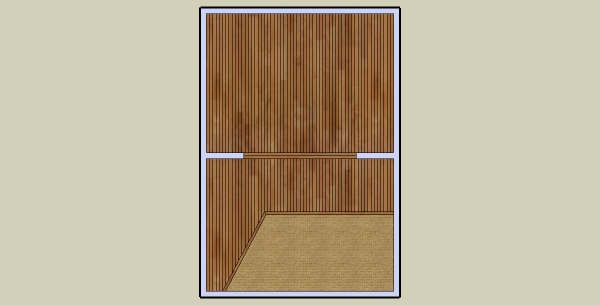Wood Floors direction???
-
Since buildings are not my thing, I was wondering, What dictates the direction that wood slats are placed on a floor...
Thanks
-
it's recommended you lay towards the window / light source (found that out from watching Holmes on Homes)
-
I don't think there's any hard and fast rules for that. If the planking is to all run in the same direction, it should probably run the along the shortest dimension of the room. If there's a line between hardwood and carpet or tile, the wood usually runs parallel to that transition line.
-
Ditto what he said, but having installed several wood floors myself, I can add a couple of considerations. One is if there is a dividing wall or door that the wood floor must continue around or through. This is a problem if the house or walls are not perfectly square, as you will need to compensate for any out of true lines and I can say that wood flooring does not bend easily. The further the walls are out of true, the more difficult it is to have long, straight runs of flooring, especially if you continue the flooring through more than one room. Not really a problem in SU, because our walls are "perfect". To make it more "real" in SU, you could place a couple of boards perpendicular across the door, opening or transition and then continue the flooring after that. Also, when coming up on carpeting or tile, you can apply the same "trick". Just my $.02 if you already hadn't seen this.
Examples:

-
To be a true expression of the structure of a building its wooden floor slats/planks should run at a right-angle to their supporting joists. The joists usually span the shortest dimension, the floor would run the longest... However if you have beams supporting shorter joists etc etc...
Best answer: The best direction is whatever looks best...
Sometimes even diagonal looks great !!! -
3eighty, If aesthetics are the primary goal, the direction of planks will have to do with the proportions, and desired orientation of the space. When you look down the length of a floor, with the planks parallel to your view, the spatial perspective is foreshorten. In the other direction, the perspective is elonged. For your rendering, it may only matter which direction makes the rendering look.
While this is a personal judgment, I feel that what you see when standing in a space can not be created in a still image. So in the presentation of a design, it may be more important to portray the sense of the space, then to render by accurate geometry, but when necessary, with the proper disclaimer.
-
Thanks to all of you..Some pretty cool info...

Advertisement







